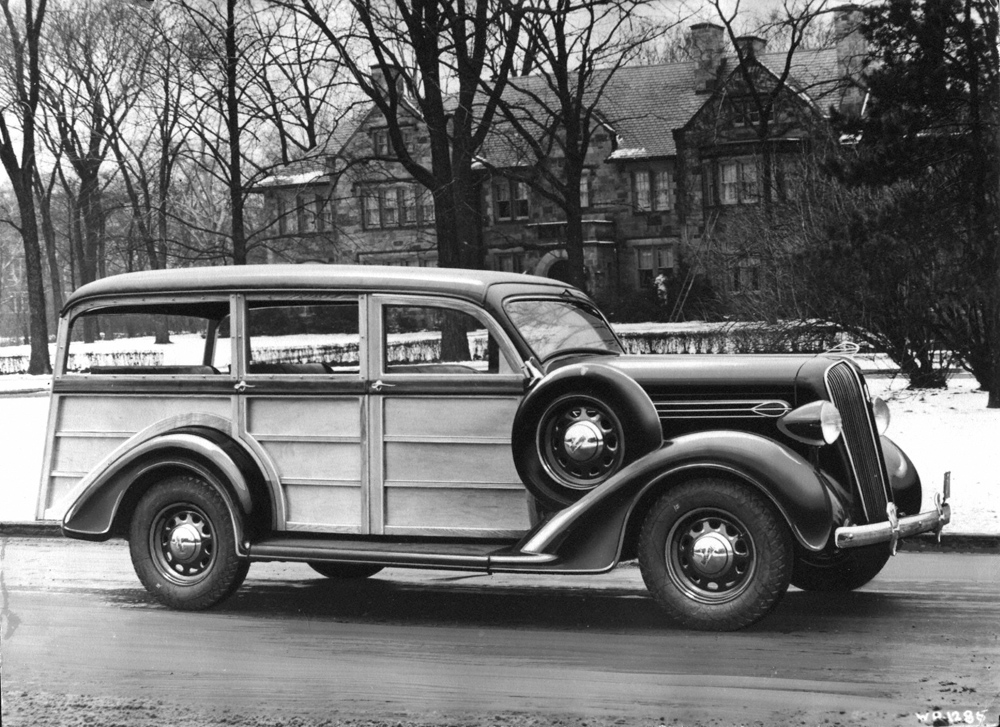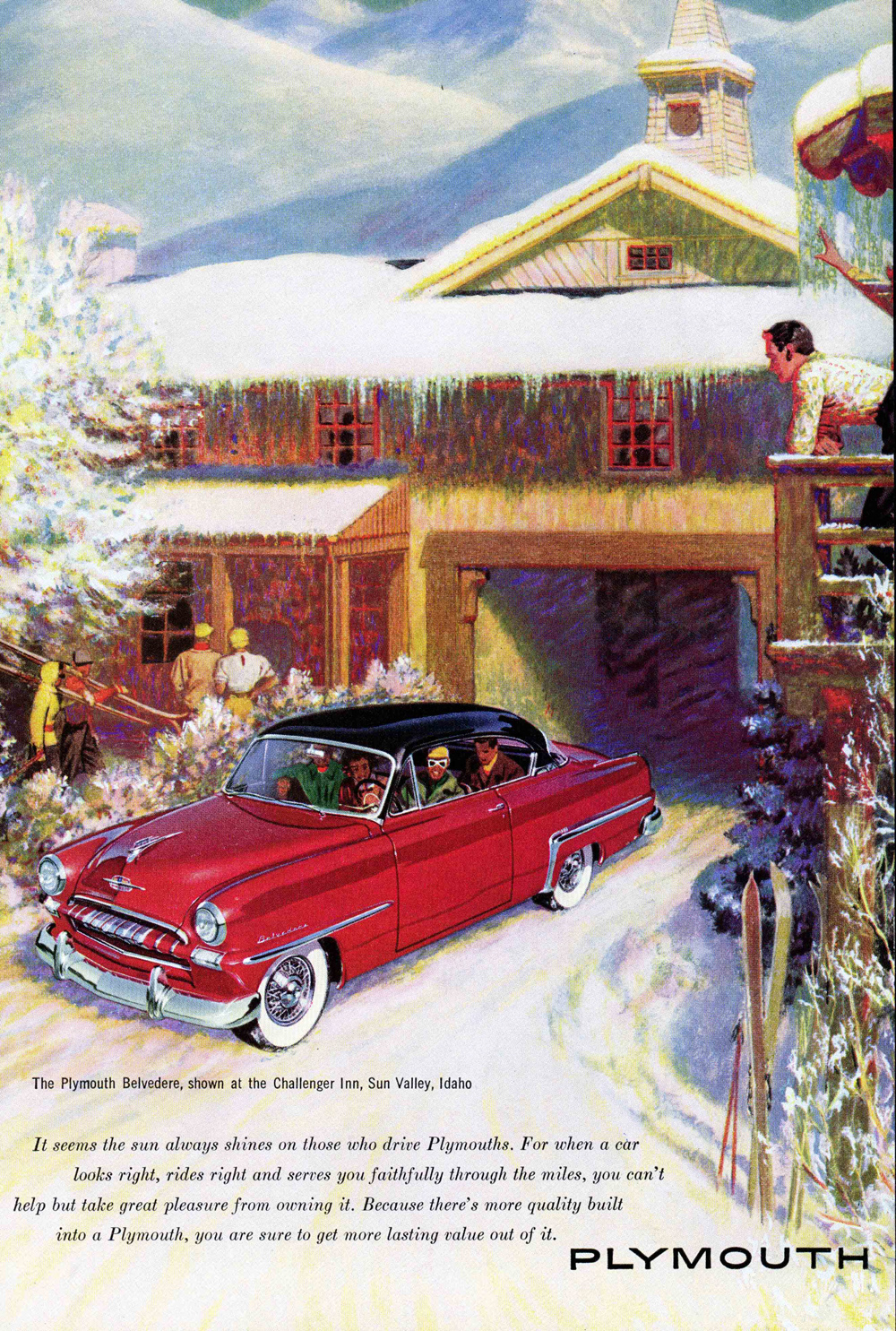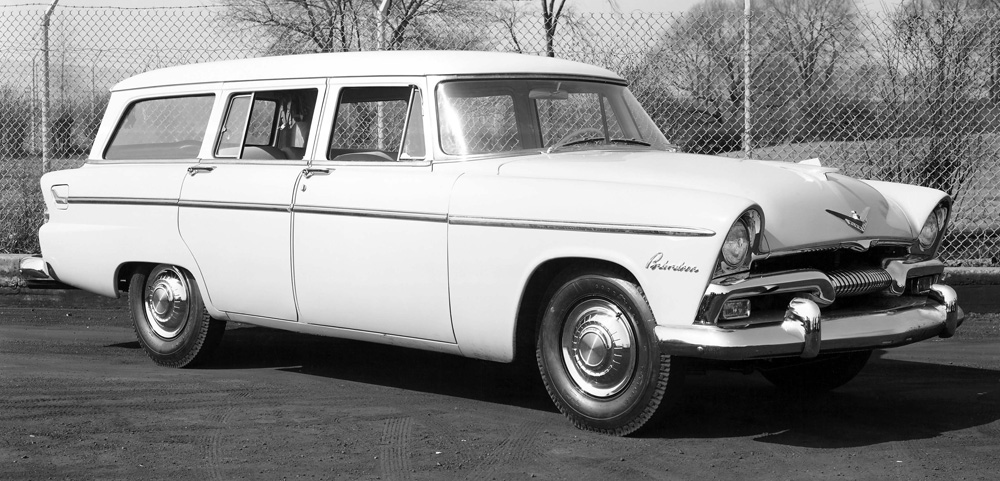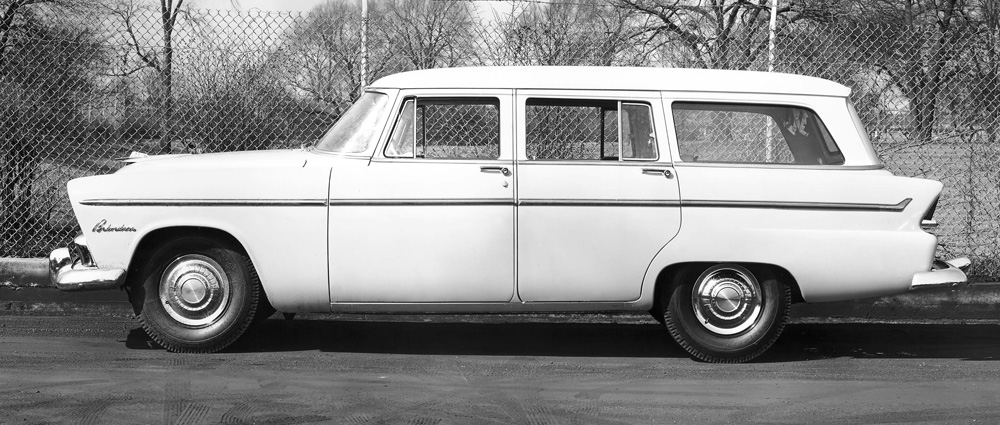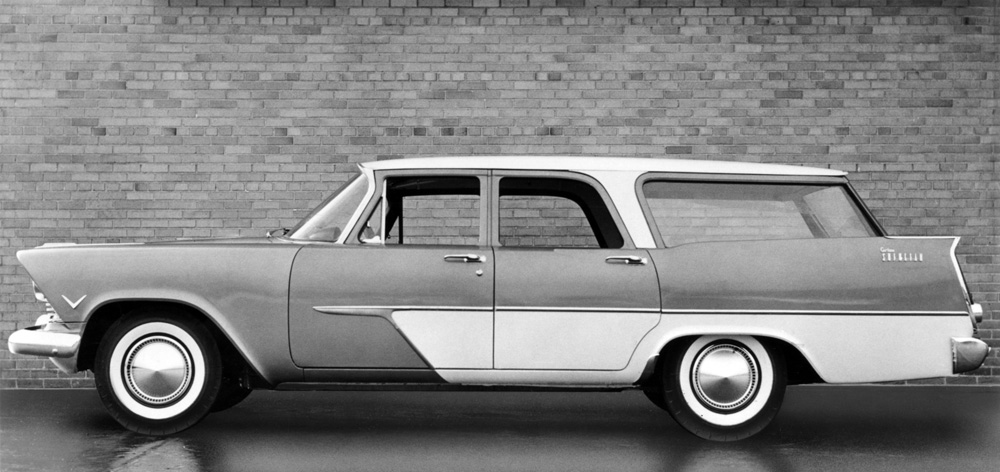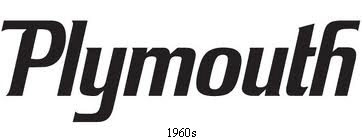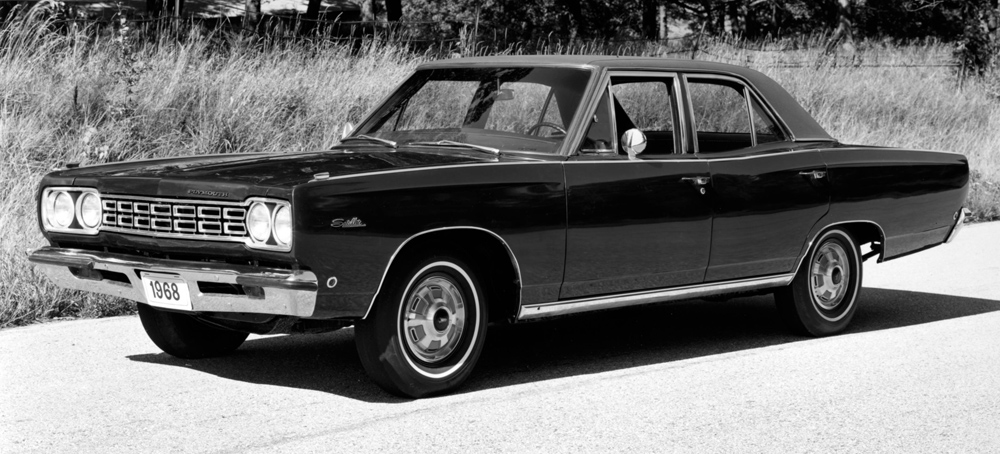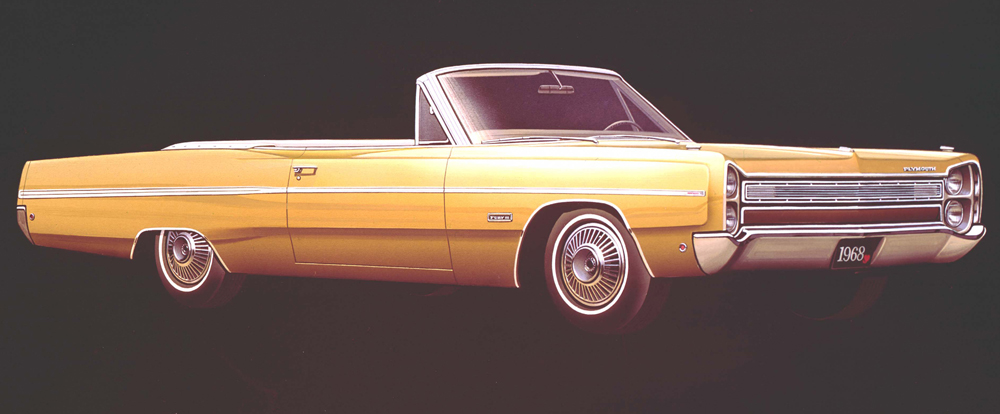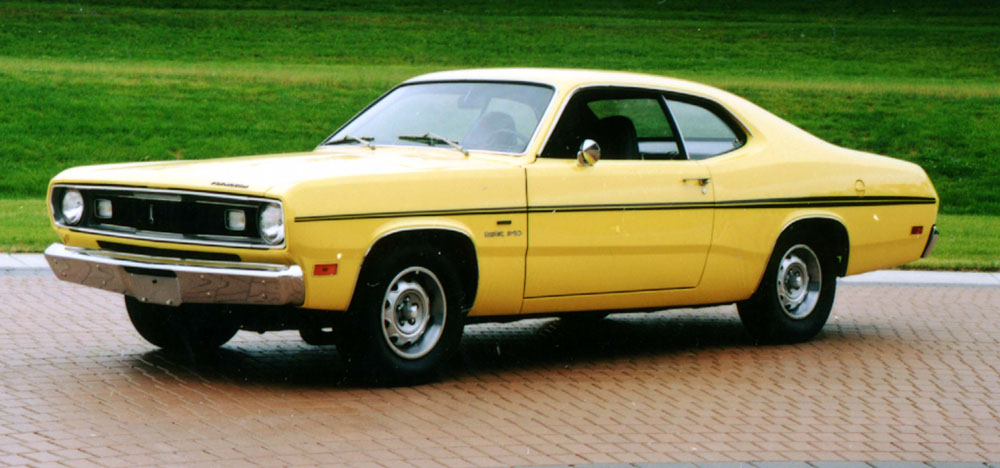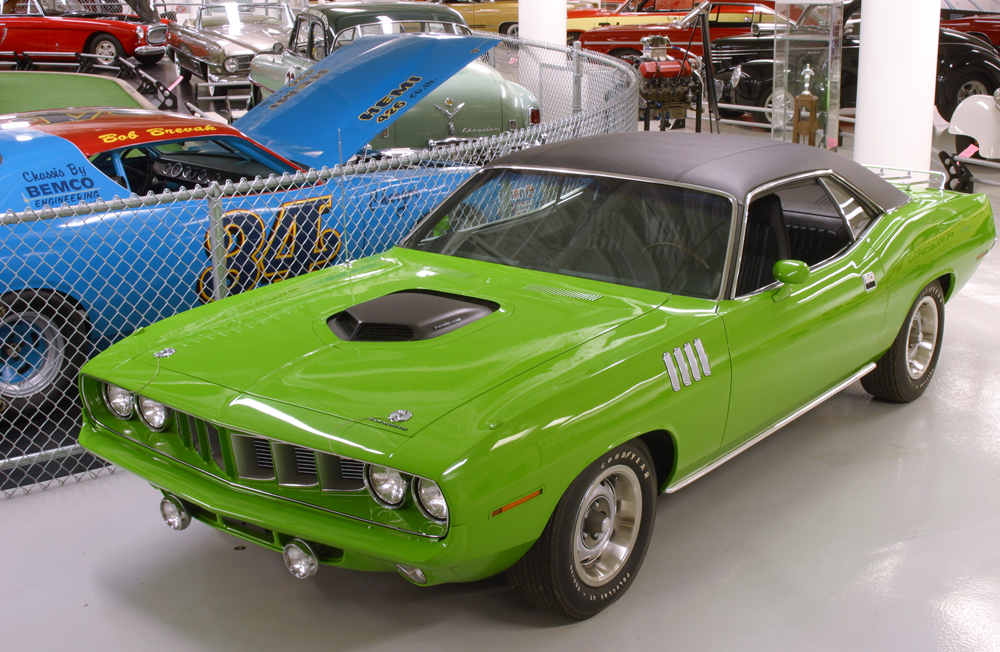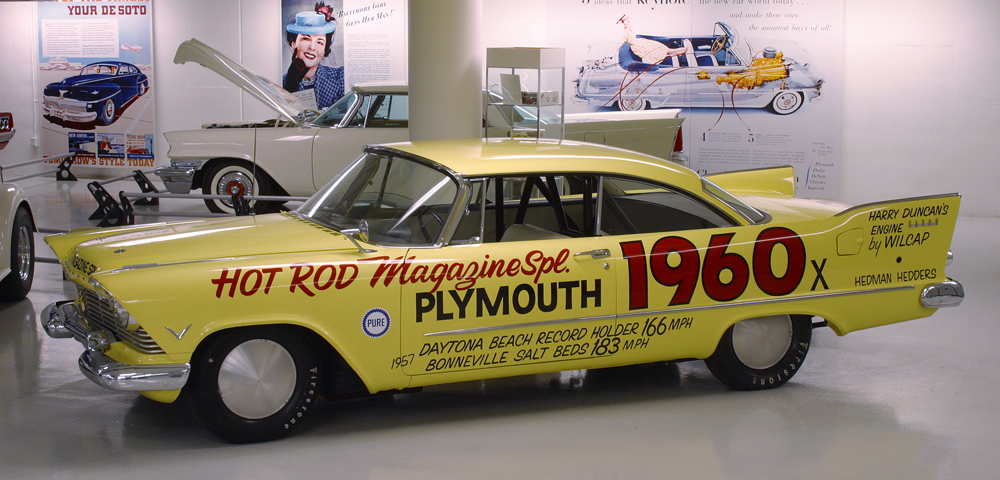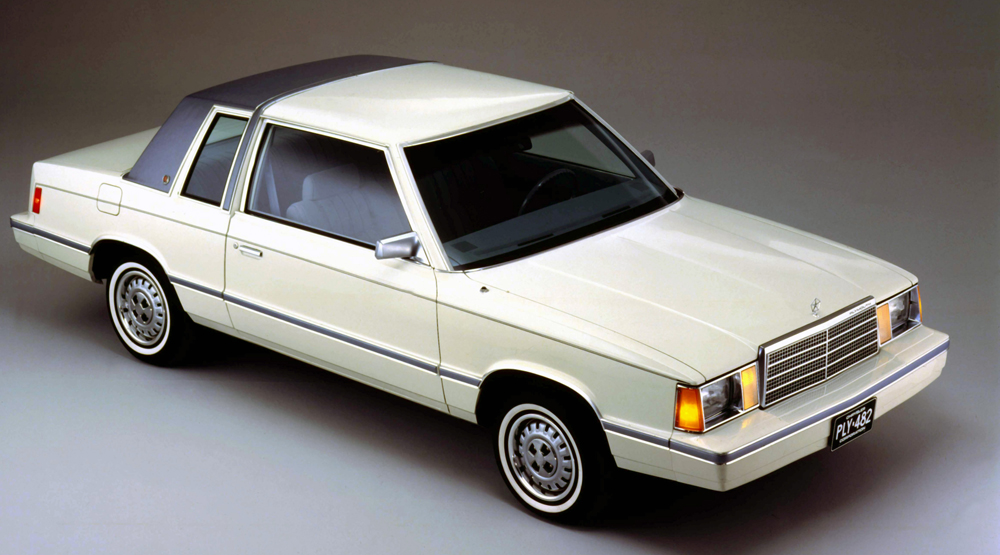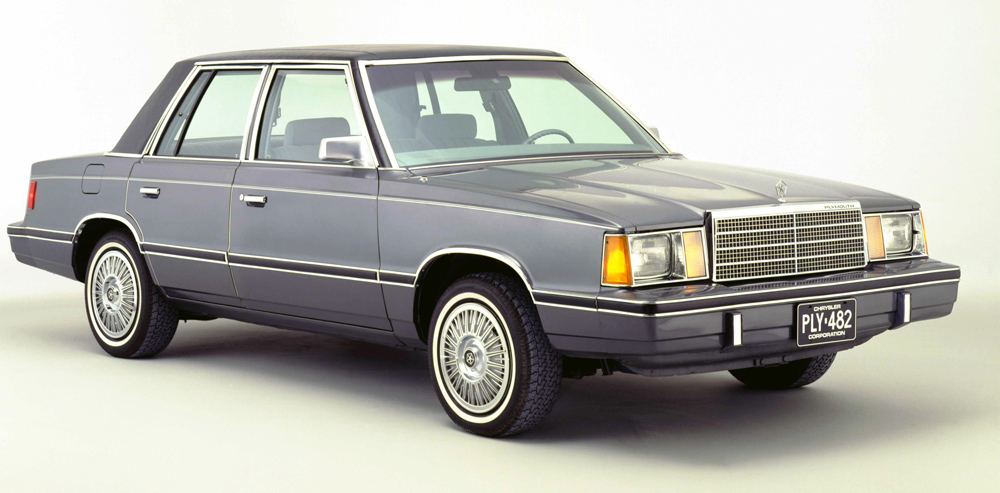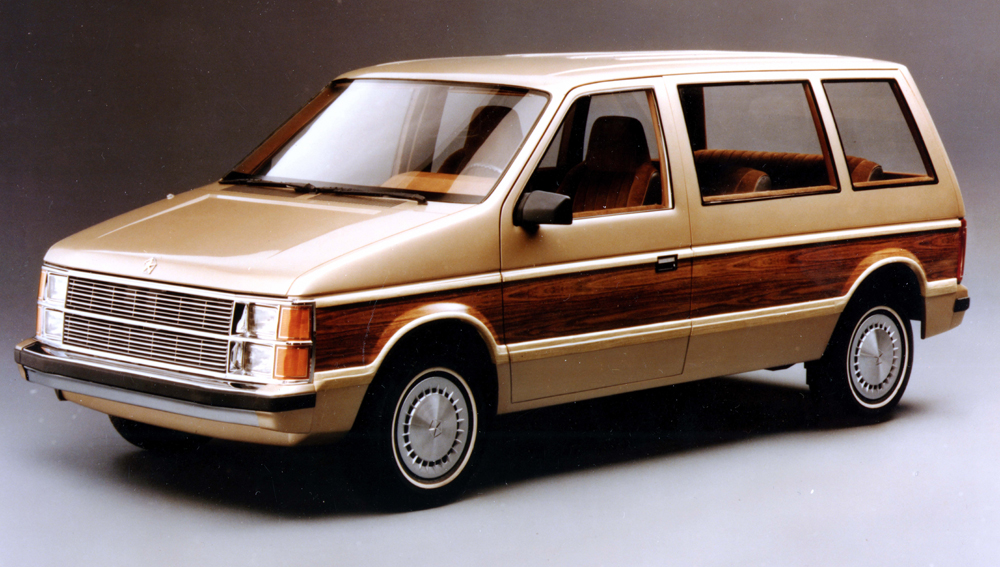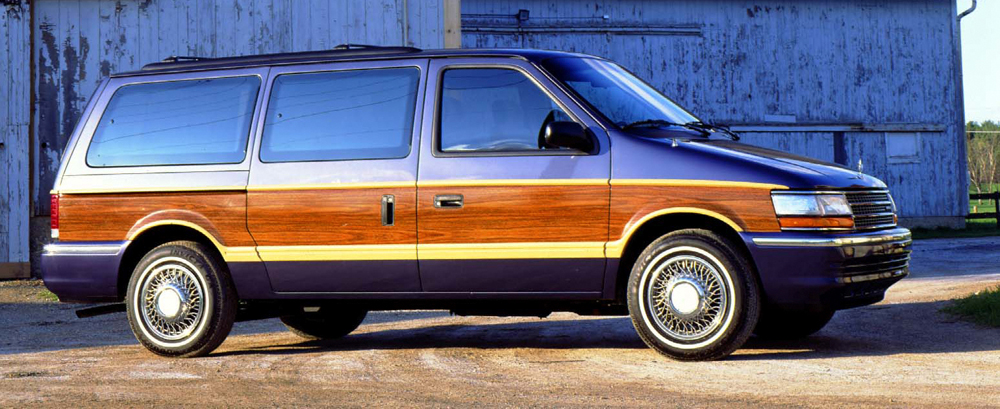|
|
|
|
|
|
Plymouth sales were a bright spot during this dismal automotive period, and by 1931 Plymouth rose to the number three spot among all cars. In 1931 with the Model PA, the company introduced floating power and
boasted, "The economy of a four; the smoothness of a six." In 1933 Chrysler decided to catch up with Ford and Chevrolet with respect to engine cylinder count. The 190 cu in version of Chrysler's flathead-6 engine was
equipped with a downdraft carburetor and installed in the new 1933 Plymouth PC, introduced on 17 November 1932. However, Chrysler had reduced the PC's wheelbase from 112 in (284.5 cm) to 107 in (271.8 cm), and the car sold
poorly. By April 1933, the Dodge division's Model DP chassis, with a 112 in (284.5 cm) wheelbase, was put under the PC body with DP front fenders, hood, and radiator shell. The model designation was advanced to PD and the car
was marketed as the "DeLuxe" 1933 Plymouth. This car sold very well and is the 1933 model most commonly found in collections. The PC became the 'Standard Six'. It had been the 'Plymouth Six' at introduction, and was
sold through to the end of 1933, but in much lower numbers. It is consequently in the minority in collectors' hands today. In 1937, Plymouth (along with the other Chrysler makes) added safety features such as flat dash boards
with recessed controls and the back of the front seat padded for the rear seat occupants.[2] The PC was shipped overseas to Sweden, Denmark, and the UK, as well as Australia. In the UK it was sold as a 'Chrysler Kew', Kew
Gardens being the location of the Chrysler factory outside London. The flathead 6 which started with the 1933 Model PC stayed in the Plymouth until the 1959 models.
1936 Plymouth Westchester Suburban wagon
1953 Plymouth
1955 Plymouth Belvedere Suburban Wagon
1955 Plymouth Belvedere Suburban Wagon
1957 Plymouth Suburban Wagon
1960 Valiant
1963 Valiant
1968 Satellite Sedan
1968 Plymouth Sport Fury
1968 Plymouth Fury III convertible
1970 Duster 340
Timeline
1982 Plymouth Reliant
1982 Plymouth Reliant
1983 Plymouth Voyager Minivan
1992 Plymouth Voyager Minivan
Chrysler Heritage Outside North America (1924-2004) Chrysler has repeatedly introduced unconventional vehicles and engineering innovations. Those innovations range from the Chrysler Six, which in 1924 redefined what a passenger car should be, to cab-forward designs and segment-defining MPVs that helped crystallise the brand's image in the 1990s, to exciting current products like the Chrysler 300C Sedan, Touring and SRT8. The influence of the Chrysler brand's past upon its future manifests itself in every new Chrysler product. Chrysler Brand Historical Highlights 1925-1933: Chrysler broadens the model line to four separate series. Imperial emerges as a top-level luxury/performance car. Chrysler accelerates its reputation for technical innovation with a constant flow of advances and improvements. After a respectable debut in the 1925 Le Mans 24-hour endurance race in France, a pair of 1928 Chryslers finish third and fourth overall a stunning testament to Chrysler's all-round high-speed performance and stamina, as the Chrysler mid-priced cars keep up with competitors' pure sporting machines. Jaws drop when the 1931 Chrysler models appear gracefully athletic with tapered bonnets and a new series of powerful straight-8 engines. 1934-1942: The Chrysler Airflow appears in 1934 as a pure expression of engineering vision. It is a mass-production car designed with the aid of a wind tunnel, and it radically changes vehicle architecture, redefining how automobiles are designed. The Airflow becomes the epitome of the modern car (even though its styling is controversial), and the Airflow's influence can be seen in other makes around the world thereafter. The more conventional Airstream models follow the next year. Innovative engineering dominates the following years, with advancements such as the Fluid Drive hydraulic clutch coupled with Vacamatic semi-automatic gear selection that eliminates 95 percent of shifting. The Town & Country quickly catches the public's eye as the first high-quality "estate" wagon. Walter P. Chrysler dies in 1940 at age 65. When World War II is declared, Chrysler diverts its efforts to produce tanks, trucks, airplanes and other vital material. 1946-1954: In the post-war recuperation, new model introductions are few, but the pace of styling change accelerates rapidly in this period. Mahogany-trimmed Chrysler convertibles and two-door sedans become popular. Innovations continue in the form of many industry firsts such as the fully automatic PowerFlite transmission, Hydraguide power-assisted steering, Airtemp air conditioning and four-wheel disc brakes. In 1951, the Chrysler FirePower engine quickly dubbed the HEMI for its hemispherically shaped combustion chambers knocks all the other modern V-8 engines back. On the strength of the HEMI, Chrysler returns to Le Mans as the power for Briggs Cunningham's specials. 1955-1959: Design chief Virgil Exner throws design back into high gear. The HEMI's power is boosted across the lineup to an unheard-of 300 horsepower in the new Chrysler 300 for 1955. Chrysler chooses to mark this milestone car's year-by-year evolution as the famous Letter Series. In 1957, new vehicles premiere with new designs (fins and quad headlamps) and new engineering innovations, making the cars dramatically lower and better handling. 1960-1972: Every Chrysler except Imperial undergoes a radical reengineering to Unibody construction. This major advance results in bodies with greater structural integrity than the traditional body-on-frame method. Overall design also undergoes great changes in this time period, and again, many innovations in engineering are seen, such as electronic ignition, the AC alternator and Sure-Brake anti-lock brakes. The 1965 Chrysler 300L marks the true end of the original Letter Series cars, though in 1970, Hurst Performance Products and Chrysler collaborate on the 300H (for "Hurst"). 1973-1982: The Oil Producing Export Countries' (OPEC) oil embargo hits in October 1973, greatly affecting consumer taste, leading them to prefer compact and imported cars. In 1975, Chrysler responds with the handsome Cordoba, the smallest Chrysler in decades, which outsells nearly all competitors. The Cordoba implements an Electronic Lean Burn System, a very sophisticated technological approach to fuel economy and emissions issues. As the fuel crisis eases, Chrysler sales recover thanks largely to the Cordoba and the new mid-size, even smaller LeBaron. 1983-1992: The American automotive industry aligns more closely with the worldwide auto industry in terms of production and technology, building vehicles with independent suspension, front-wheel drive and other common features of the time. The gap between American and European automakers shrinks considerably. Chrysler brings out the new-generation "little" LeBaron offered in a wide array of models, including a convertible. The chic Town & Country station wagon's popularity leads to the famous nameplate and woodgrain trim being applied to the convertible. The sporty, low-slung Chrysler Laser draws a new, younger generation of buyers to the brand. The LeBaron GTS pushes into the growing Euro-style sport sedan segment, and the two-door LeBaron is radically redesigned for 1987, with the convertible version becoming the first Chrysler in decades to be designed from the ground up as a convertible. A sporty roadster called the TC has a Maserati-modified powertrain. The venerable New Yorker becomes the renamed Fifth Avenue, one of Chrysler's biggest and most profitable sellers. In 1990, Chrysler attaches the venerable Town & Country name to a luxurious version of the minivan that had opened a huge new market segment. This becomes the first minivan for the Chrysler brand, whereas the prior models from 1983 forward had been of the Dodge and Plymouth nameplates. 1993-1999: With the debut of the cab-forward Concorde in 1993, Chrysler once again explodes to the forefront of the automotive world by changing the essential architecture of the contemporary automobile, just as it had done previously with the Airflow. The following year's Chrysler LHS wins even wider admiration. The Chrysler Cirrus for 1995 so closely resembles the futuristic concept car of the same name from a few years earlier that it becomes clear that Chrysler had found a way to create cars in a way that no one else could. Beneath the new designs are new engines, new transmissions and complete new architectures. The all-new Town & Country for 1996 proves that minivans can be stylish and as luxurious as a fine car, while the Chrysler Sebring Coupe and Convertible reopen a long-ignored market for sporty cars with a back seat. The 1998 Chrysler Concorde continues a "heritage" design theme pioneered by the 1994-1997 LHS, most notably in its dramatic grille. Heritage design is also seen in the introduction of the 1999 Chrysler 300M, which continues the spirit of the legendary 300 Letter Series cars, and the LHS, filled with tasteful, evocative features like white dial gauges and even an analogue clock. In 1999, its 75th year, Chrysler unveils the segment-busting Chrysler PT Cruiser, loaded with innovations and designed with a "modern classic" look. 2000-2004: Chrysler PT Cruiser goes on sale beginning in 2000, changing the automotive landscape. The Prowler joins the Chrysler lineup in 2001, as well as the new Sebring Convertible, all-new Sebring Sedan and all-new Voyager and Town & Country minivans. In 2002 the Chrysler 300M Special and new Concorde take the stage, with the LHS being renamed the Concorde Limited. Then the Chrysler product offensive begins, bringing exciting new models to the lineup, such as the Crossfire Coupe and Roadster, Crossfire SRT6 models, PT Cruiser Cabrio and 300C Sedan and Touring.
|
|
Home < Chrysler Group < Chrysler Cars < Plymouth History
|

